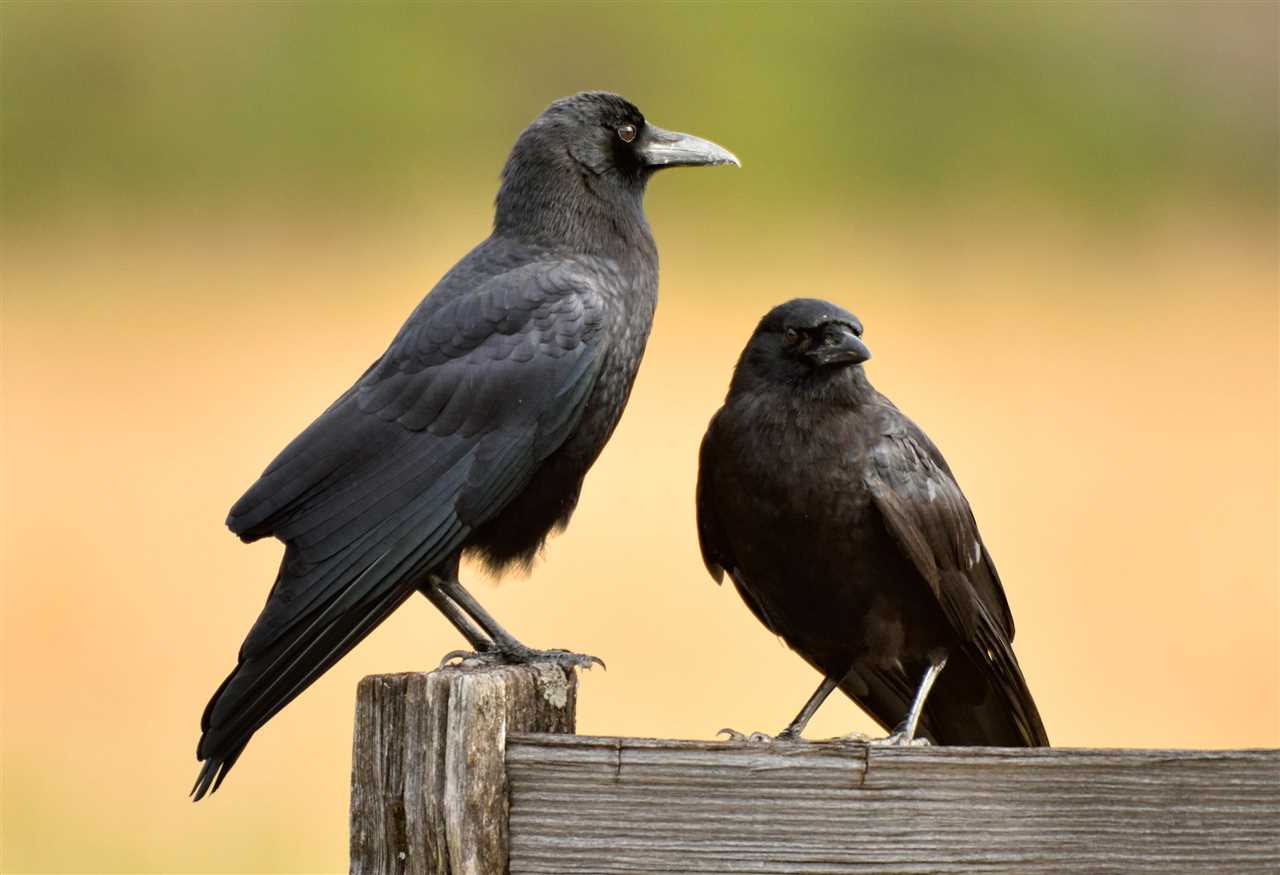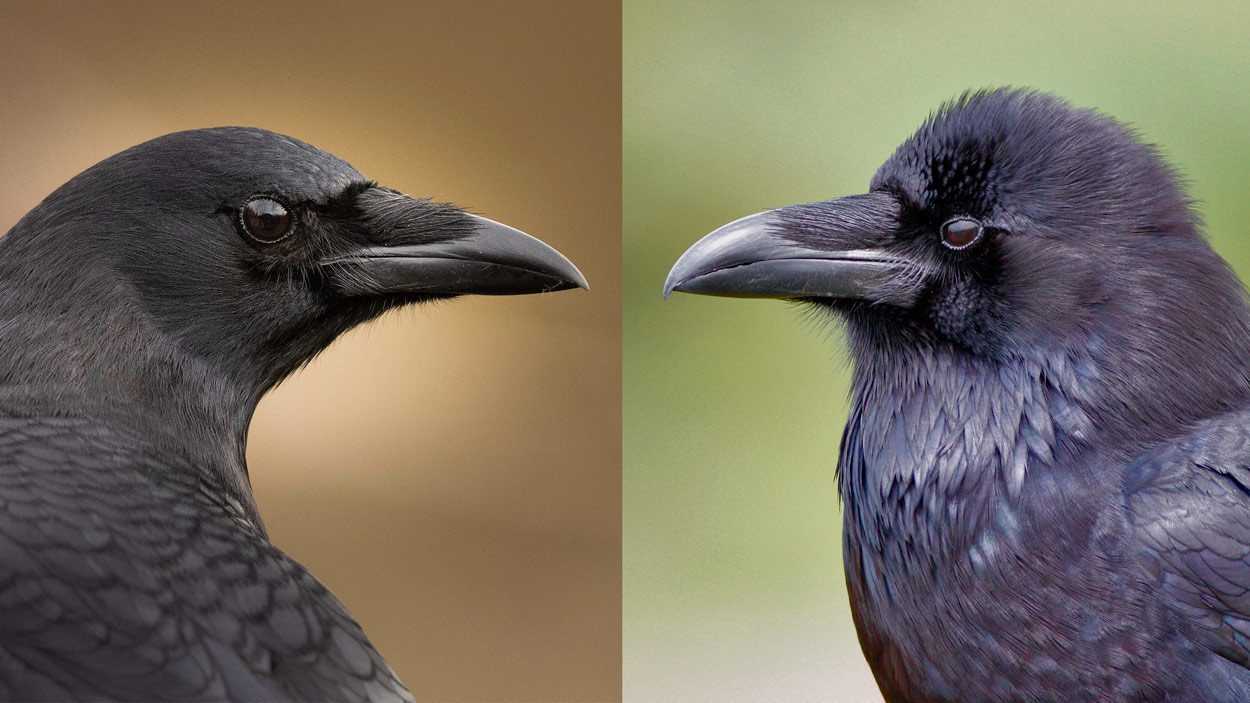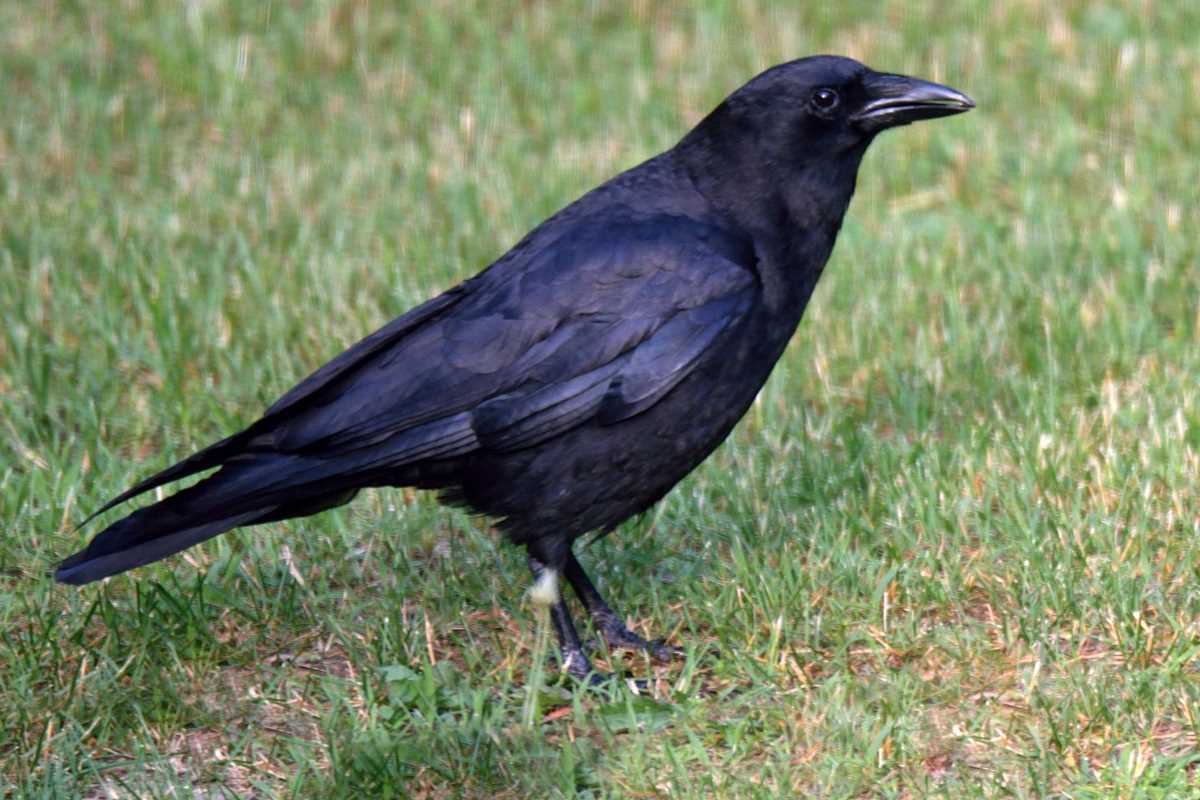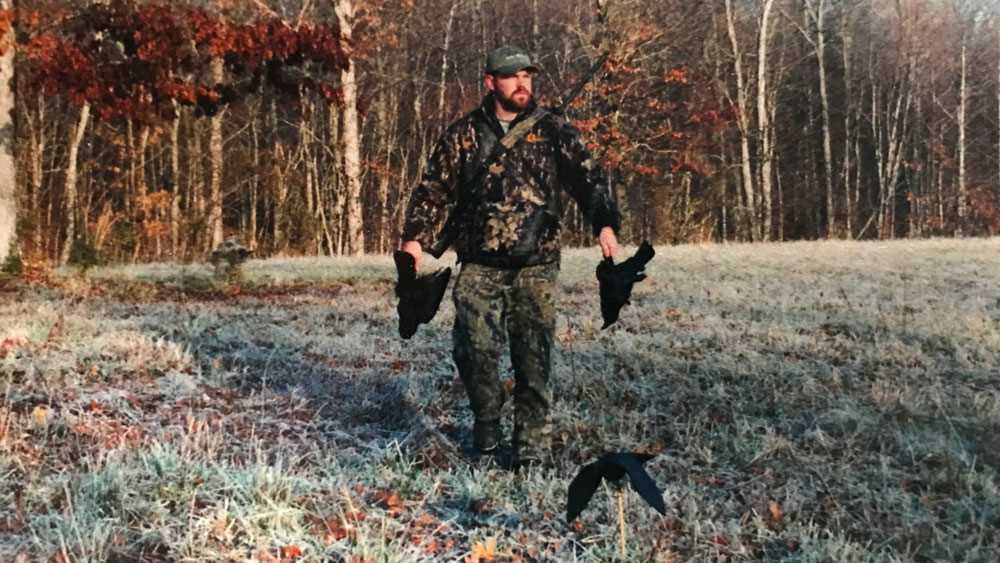Contents
Tips, Regulations, and Best Practices for a Successful and Ethical Crow Hunting Season

The crow hunting season is an exciting time for hunters looking to test their skills and enjoy the outdoors. Crows are not only a challenging target, but also present an opportunity to engage in wildlife management and conservation efforts. As with any hunting season, it is important to adhere to regulations and follow best practices to ensure a safe and successful experience.
Before heading out for a crow hunt, it is essential to familiarize yourself with the specific regulations for your area. These can vary from state to state and may include restrictions on hunting hours, bag limits, and the use of certain equipment. Familiarizing yourself with these regulations will ensure that you are hunting within the law and contributing to the sustainable management of the crow population.
When it comes to hunting crows, it is important to remember that safety should always be a top priority. Using a shotgun with an appropriate shot size and pattern is recommended for taking down crows effectively and ethically. Additionally, wearing camouflage clothing and using appropriate cover can help you remain undetected by these keen-eyed birds. Remember to always be aware of your surroundings and keep a safe distance from other hunters.
While hunting crows can be a fun and challenging activity, it is also important to act responsibly and ethically. Crows are highly intelligent creatures and play an important role in ecosystems. Instead of solely focusing on the hunt, take the opportunity to learn more about these birds and their behavior. Appreciate their intelligence and adaptability, and consider how your actions can contribute to their preservation.
Understanding the Crow Hunting Season

Crow hunting season is a specific time of year when hunters are legally allowed to hunt crows in certain areas. It is important for hunters to understand the regulations and best practices associated with this season in order to ensure safety, success, and compliance with the law.
Crows are considered a game species in many states, and their hunting season is typically set by wildlife management agencies. This season is implemented to regulate and control crow populations, as well as provide recreational hunting opportunities for hunters.
During the crow hunting season, hunters must possess the necessary licenses and permits required by their state or local authorities. It is crucial to familiarize yourself with the specific regulations regarding bag limits, shooting hours, and legal methods of hunting crows.
Some important tips to keep in mind during the crow hunting season include:
- Identification: It is essential to be able to accurately identify crows before shooting. This helps prevent the accidental targeting of protected bird species.
- Decoy Use: Using crow decoys can be an effective strategy to attract crows within range. However, hunters should be cautious to avoid creating an overcrowded and unnatural hunting area.
- Calling Techniques: Learning and practicing different crow calling techniques can greatly increase the chances of luring crows close enough for a successful shot.
- Shot Placement: To ensure humane and ethical kills, hunters should aim for vital areas such as the head or chest. Shooting crows in flight can be challenging, so it is important to practice shooting at moving targets before hunting season.
- Responsible Hunting: It is important to always follow ethical hunting practices, including respecting private property rights and cleaning up after yourself in hunting areas.
By understanding the crow hunting season regulations and following best practices, hunters can have a safe and successful hunting experience while helping to manage crow populations.
The Purpose of Crow Hunting

Hunting crows serves several important purposes in the wildlife management and conservation efforts. Crow hunting helps regulate the crow population, as it is known that crows can become overpopulated in certain areas and pose a threat to other bird species. By controlling the crow population, we can ensure a healthier and more balanced ecosystem.
Crow hunting also helps minimize crop damage caused by these intelligent birds. Crows are notorious for raiding farmers’ fields and orchards, damaging crops and creating significant economic losses. Hunting crows helps reduce these damages and protects the livelihoods of farmers.
Furthermore, crow hunting provides recreational opportunities for hunters, offering them a challenging and exciting pursuit. Crows are highly intelligent and adaptive birds, making them a formidable target for skilled hunters. Engaging in crow hunting allows hunters to test their skills, enhance their marksmanship, and enjoy the thrill of the chase.
It is important to note that crow hunting should always be conducted responsibly and in accordance with the applicable regulations and best practices. This ensures the sustainability of the crow population and maintains the integrity of the hunting sport.
Crow hunting presents a valuable opportunity to manage the crow population, protect agriculture, and provide an engaging recreational activity for hunters. By recognizing the purpose behind crow hunting and practicing it responsibly, we can contribute to the overall well-being of our wildlife and ecosystems.
Crow Hunting Seasons and Dates

Crow hunting season is a regulated activity in many countries and states, with specific dates established to ensure the sustainable management of crow populations. These dates may vary depending on the region and wildlife management area. It is important for hunters to familiarize themselves with the hunting seasons and dates in their specific area to ensure compliance with the regulations.
The crow hunting season typically aligns with the time when crows are most abundant and causing significant damage to crops or posing other threats to human activities. This helps to control the population and prevent any negative impacts on the environment.
Each hunting season has specific dates during which hunters are allowed to pursue and harvest crows. It is important to note that hunting outside of the designated season is illegal and may result in penalties and fines. By adhering to the established hunting seasons and dates, hunters can play an essential role in crow population management and control.
Crow hunting seasons and dates are often listed in a table format, which provides a clear and concise overview of the information. The table typically includes the start and end dates for each hunting season, as well as any specific restrictions or regulations that hunters need to follow.
| Region | Hunting Season |
|---|---|
| State A | September 1 – January 31 |
| State B | October 15 – January 15 |
| State C | November 1 – February 28 |
It is essential for hunters to consult the official wildlife management agency or department in their area to receive the most up-to-date and accurate information regarding crow hunting seasons and dates. This ensures that hunters are in full compliance with the regulations and can enjoy a safe and responsible hunting experience.
Tips for Successful Crow Hunting

If you’re looking to have a successful crow hunting trip, here are some tips to help you improve your chances:
- Scout the area beforehand to locate popular crow roosting sites.
- Set up your decoys strategically to attract the attention of passing crows.
- Use a crow call or electronic crow call to mimic the sounds of a distressed crow, which will attract more crows to your location.
- Stay hidden and use camouflage to blend into your surroundings.
- Shoot at crows within range, aiming for the head or neck to ensure a clean kill.
- Practice shooting regularly to improve your accuracy and increase your chances of hitting your target.
- Consider hunting with a partner, as it can be helpful to have someone to spot and call in crows.
- Be patient and persistent. Crow hunting can require time and effort, but a successful hunt can be incredibly rewarding.
Following these tips can help increase your chances of having a successful crow hunting trip. Remember to always follow the hunting regulations and practice ethical hunting practices.
Choosing the Right Hunting Equipment

When it comes to hunting crows, having the right equipment is essential. Here are some tips to help you choose the right hunting gear for a successful crow hunting season:
- Shotgun: The most common choice for crow hunting is a 12-gauge shotgun. Make sure to select a shotgun with a tight choke and a suitable barrel length for accuracy and range.
- Ammunition: Opt for high-quality ammunition specifically designed for hunting crows. Choose shot sizes ranging from 6 to 8, as they are effective in bringing down crows while minimizing damage to the bird.
- Decoys: Using crow decoys can significantly improve your chances of attracting crows to your hunting area. Look for realistic decoys that mimic the appearance and behavior of crows.
- Calls: Crow calls are essential for attracting crows and luring them into range. Consider using both mouth calls and electronic calls to increase your chances of success.
- Camouflage: Blend into your surroundings by wearing camouflage clothing and using camouflage gear like blinds or ghillie suits. This will help you stay hidden from the keen eyes of crows.
- Optics: Invest in a quality pair of binoculars or a spotting scope to help you spot crows from a distance. This will give you a better chance of detecting crows and planning your approach.
- Accessories: Don’t forget to bring essential accessories such as shooting sticks, a game bag for carrying harvested crows, and any additional tools or equipment that may be required in your specific hunting area.
Remember to check your local hunting regulations to ensure you are using legal hunting equipment and following any specific guidelines or restrictions related to crow hunting. With the right gear and preparation, you’ll be well-equipped for a successful crow hunting season.
Locating Crow Roosting Areas

Crows are known for roosting together in large groups, especially during the winter season. If you are an avid crow hunter, it is crucial to know how to locate their roosting areas. Here are a few tips to help you in your search:
1. Observation: Spend some time observing crows in your area. Look for large groups of crows flying together to find potential roosting sites.
2. Evening flights: Crows tend to gather and fly towards their roosting areas in the evening. Position yourself in an elevated location to get a better view of their flight patterns.
3. Dusk calling: At dusk, crows tend to make distinct calls to communicate and gather before roosting. By listening closely, you may be able to pinpoint the general direction of their roosting area.
4. Visual cues: Look for signs of crow roosting areas, such as large amounts of droppings, feathers, or congregations of crows in certain trees or structures.
5. Navigational markers: Crows often use landmarks or specific geographic features as navigational markers. Look for these markers, such as bodies of water or distinct tree formations, to help you locate their roosting area.
6. Collaboration: Connect with other crow hunters or local wildlife enthusiasts who may have valuable information about known crow roosting areas in your region.
Remember to always abide by local regulations and obtain the necessary permits when hunting crows during the designated seasons. Good luck!
|
Employing Effective Calling Techniques When it comes to hunting crows, employing effective calling techniques can greatly increase your chances of success. Crow calling is an important skill to master, as it can help attract crows to your hunting area and entice them within range of your shotgun. There are several different types of crow calls that hunters can utilize. The basic crow call is a loud and harsh “caw” sound, imitating the crow’s natural call. This can be made with a simple mouth diaphragm, hand call, or electronic caller. In addition to the basic crow call, there are also other calls that can be used to imitate distress, excitement, or even the sounds of other crows. The distress call is particularly effective in attracting crows, as it signals to them that there may be an injured or vulnerable crow in the area. When using crow calls, it’s important to vary the volume and cadence of your calls to mimic the natural sounds of a crow. Crows are intelligent birds and can quickly become wary if they sense something is amiss. By varying your calls and imitating different types of crow vocalizations, you can create a more realistic and convincing calling sequence. In addition to using crow calls, it can also be effective to use decoys to attract crows to your hunting area. Decoys can be placed on the ground or on elevated stands, and should be set up in a realistic manner to mimic a group of feeding or resting crows. When employing calling techniques, it’s important to keep in mind that crows have excellent eyesight and hearing. It’s crucial to blend into your surroundings and avoid any unnecessary movement that could give away your position. Additionally, using camouflage clothing and face paint can help you remain undetected. Overall, employing effective calling techniques is essential for a successful crow hunting experience. By utilizing a variety of calls, varying your volume and cadence, and using decoys, you can increase your chances of attracting crows to your hunting area and enjoying a fruitful hunt. |
Safety and Legal Regulations

During the crow hunting season, it is important to adhere to safety and legal regulations to ensure a safe and ethical hunt. Here are some key guidelines to follow:
| 1. Obtain necessary licenses and permits | Before participating in crow hunting, it is essential to obtain the required licenses and permits. Check with your local wildlife agency to determine the specific requirements and regulations in your area. |
| 2. Be aware of season dates and limitations | Stay informed about the designated crow hunting season in your region. It is crucial to know the start and end dates, as well as any restrictions or limitations that may be in place. |
| 3. Practice firearm safety | Handle firearms with utmost care and always follow proper safety protocols. Treat every firearm as if it is loaded, never point it at anything you do not intend to shoot, and keep your finger off the trigger until ready to shoot. |
| 4. Use appropriate hunting equipment | Ensure you have the appropriate hunting equipment for crow hunting, including decoys, calls, and camouflage. Using the right gear can increase your chances of success while also promoting safe and responsible hunting. |
| 5. Respect property boundaries and public land rules | Always hunt on designated hunting grounds and adhere to property boundaries. Obtain permission from landowners to access private land and follow any additional rules or regulations that may be in place. |
| 6. Practice ethical hunting | Hunters should strive to harvest crows ethically and ensure minimal suffering. Make clean and humane shots, dispose of harvested animals responsibly, and avoid excessive disturbance to other wildlife or their habitats. |
| 7. Be mindful of other hunters and non-hunters | Respect the presence of other hunters and non-hunters in the area. Always communicate and practice proper etiquette to ensure a safe and harmonious hunting experience for everyone involved. |
By following these safety and legal regulations, you can have a successful and enjoyable crow hunting season while also promoting safety, respect, and sustainability in the hunting community.
Safety Guidelines for Crow Hunting

When participating in crow hunting during the season, safety should always be your top priority. As you venture out into the field, keep these safety guidelines in mind to ensure a successful and accident-free hunting experience.
1. Familiarize Yourself with Local Regulations:
Before embarking on your crow hunting excursion, make sure you are fully aware of the local hunting regulations. This includes understanding the designated hunting areas, hunting season dates, and any specific limitations or requirements set by the authorities.
2. Wear Appropriate Safety Gear:
Protective gear such as ear protection and eye goggles should be worn at all times during crow hunting. These accessories can safeguard you from loud gunshots and potential eye injuries from debris or birds in flight.
3. Maintain Proper Firearm Handling:
Always treat your firearm with the utmost respect and follow proper handling and safety procedures. Keep your finger off the trigger until you are ready to shoot, and never point your gun at anything other than the intended target.
4. Use Binoculars and Scopes:
Utilize binoculars or scopes to clearly identify your target before taking a shot. This helps to prevent any accidental shootings or mistaking non-target birds for crows.
5. Communicate with Your Hunting Companions:
Establish clear communication channels with fellow hunters to ensure everyone is aware of each other’s locations and movements. Avoid shooting in the direction of other hunters and maintain a safe distance between one another.
6. Be Aware of Surroundings:
Stay alert and constantly be aware of your surroundings. Be mindful of other wildlife, structures, or people in the area. Watch for any potential hazards or obstacles that could pose risks to both yourself and others.
7. Dispose of Waste Responsibly:
Properly dispose of any waste, such as empty cartridges or other debris, in designated areas. Leaving litter behind not only harms the environment but can also create hazards for wildlife and other individuals in the area.
Remember, safety should always come first when participating in crow hunting. By following these safety guidelines, you can have a fulfilling and enjoyable hunting experience while minimizing any potential risks.
Licenses and Permits

In order to participate in the crow hunting season, it is important to have the necessary licenses and permits.
Firstly, hunters are required to obtain a valid hunting license from the appropriate wildlife agency or department. This license serves as proof that the individual has met the necessary requirements and is qualified to engage in hunting activities. It is essential to familiarize yourself with the specific regulations and requirements pertaining to crow hunting in your state or region.
In addition to a general hunting license, some states may require a specific crow hunting permit. This permit is typically issued in order to monitor and manage the crow population effectively. It is important to check if your state or region requires this additional permit and obtain it if necessary.
Furthermore, it is crucial to stay updated on the expiration dates of your licenses and permits. Crow hunting season typically has specific dates during which hunting is permitted. It is important to adhere to these dates and ensure that your licenses and permits are valid throughout the entire hunting season.
Note: Regulations regarding licenses and permits may vary from state to state, so it is important to consult the appropriate wildlife agency or department for accurate and up-to-date information regarding crow hunting in your area.
By following the necessary licensing and permitting procedures, hunters can enjoy a safe and legal crow hunting season while contributing to population management efforts.
Hunting Regulations and Bag Limits

When it comes to hunting crows, it is essential to familiarize yourself with the hunting regulations and bag limits in your area. These regulations are put in place to ensure the sustainability of the crow population and to promote ethical hunting practices.
Before heading out for the hunt, it is crucial to check with your local wildlife management agency or department to obtain the latest information on hunting seasons, licensing requirements, and bag limits. Each state or region may have different rules and regulations, so it is essential to stay informed and compliant.
Bag limits are restrictions on the number of crows that a hunter is allowed to harvest in a given hunting season. These limits are in place to maintain the crow population at a healthy level and prevent overhunting. Exceeding the bag limits can result in penalties and fines.
Bag limits for crow hunting can vary depending on the location and time of year. It is crucial to pay close attention to the specific bag limits set by your local wildlife management agency. These limits may be determined based on factors such as crow population trends, breeding cycles, and conservation goals.
Remember, hunting responsibly means not only following the regulations and bag limits but also practicing ethical hunting techniques. This includes aiming for clean and humane kills, not wasting harvested crows, and respecting private property boundaries.
By adhering to the hunting regulations and bag limits, we can ensure the sustainability of the crow population and contribute to the overall conservation efforts. So, before you embark on your next crow hunting adventure, take the time to familiarize yourself with the regulations in your area for a safe and ethical hunting experience.
Best Practices for Crow Conservation

Conservation of crows is vital to maintain a healthy and balanced ecosystem. Here are some best practices to follow throughout the season:
- Minimize disturbance to crow nesting sites during their breeding season. Avoid cutting trees or trimming branches where crow nests are present.
- Do not disturb crow roosting sites during the winter months when large flocks gather for communal roosting. These roosts are important for their survival and should be protected.
- Discourage the use of pesticides that can harm crows and other wildlife. Opt for natural and eco-friendly pest control methods instead.
- Prevent the spread of diseases by regularly cleaning bird feeders and bird baths. Crow populations can be affected by avian diseases, so maintaining cleanliness is crucial.
- Avoid using crow decoys or predator calls that may cause unnecessary stress or confusion among crows. Respect their natural behavior and avoid unnecessary disturbance.
- Support conservation organizations and initiatives that aim to protect crows and their habitats. Joining local bird watching groups or participating in citizen science programs can also contribute to crow conservation efforts.
By implementing these best practices, we can help ensure the long-term survival and conservation of crow populations.
Reducing Collateral Damage

While hunting crows can be an effective way to control their population and minimize their impact on crops, it is important to take precautions to reduce collateral damage. As responsible hunters, here are some best practices to follow:
1. Use proper ammunition: It is essential to use the appropriate ammunition while hunting crows. By using smaller shot sizes, you can minimize the risk of over-penetration and reduce the chance of unintended damage to the surrounding environment.
2. Aim for precision: Practice your shooting skills to improve accuracy and ensure clean kills. By focusing on precise shots, you can minimize the chances of injuring non-target birds or causing unnecessary suffering.
3. Be mindful of the surroundings: Take time to scout the hunting area and assess any potential risks. Be aware of nearby property, livestock, or human activity, and avoid shooting in their direction to prevent any accidental harm.
4. Consider the weather conditions: Strong winds can make shooting more challenging and increase the risk of losing control over your shots. Wait for calmer conditions to ensure better accuracy and reduce the chances of stray pellets causing unintended damage.
5. Respect legal restrictions: Understand and comply with local laws and regulations regarding crow hunting. They may specify certain hunting seasons, limits, and areas where hunting is prohibited. Adhering to these rules is crucial in promoting responsible hunting practices and conservation efforts.
By following these guidelines, you can enjoy crow hunting while minimizing collateral damage and fostering a safer hunting environment for everyone involved.

A skilled hunter, dedicated conservationist, and advocate for ethical practices. Respected in the hunting community, he balances human activity with environmental preservation.
